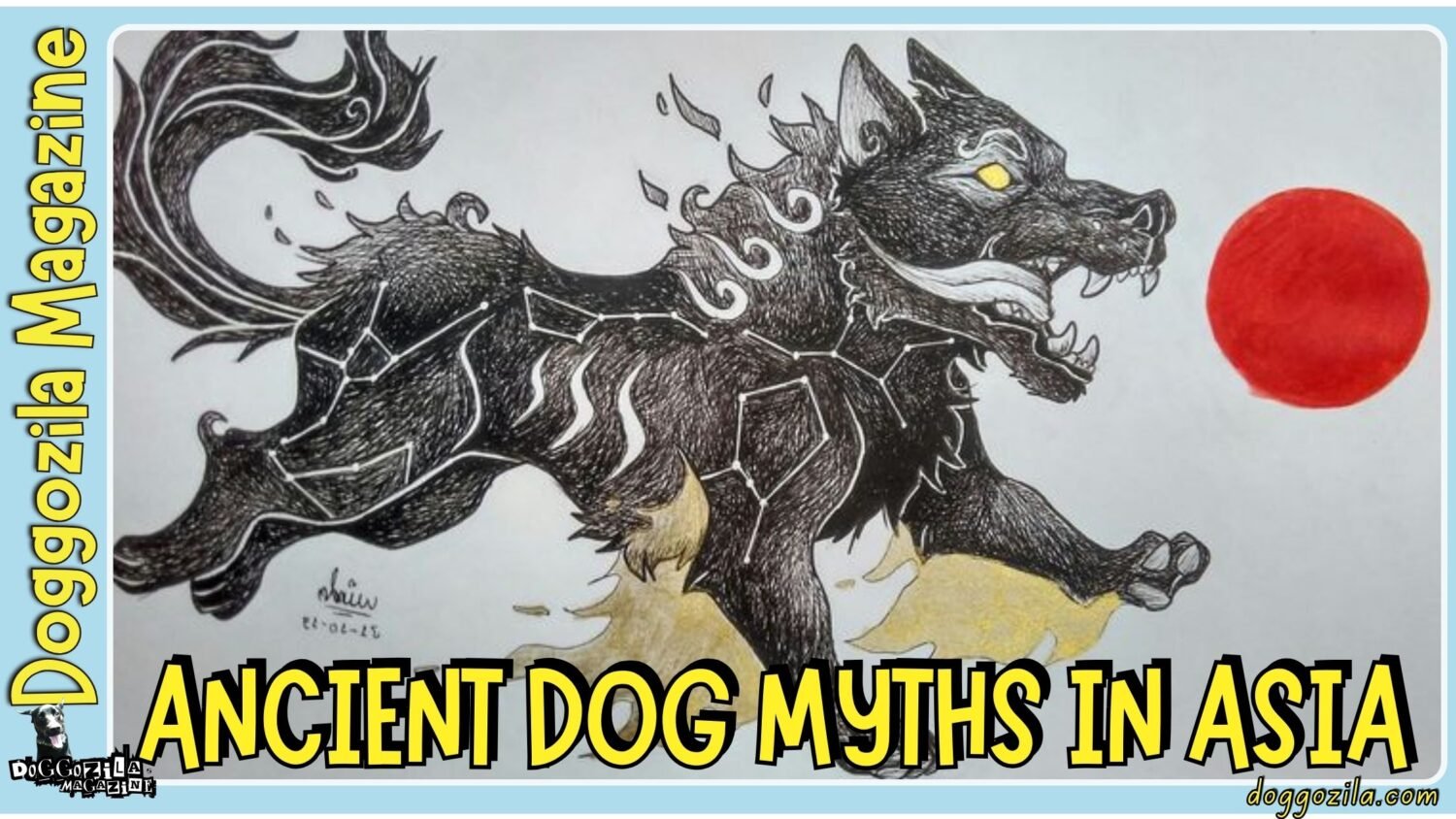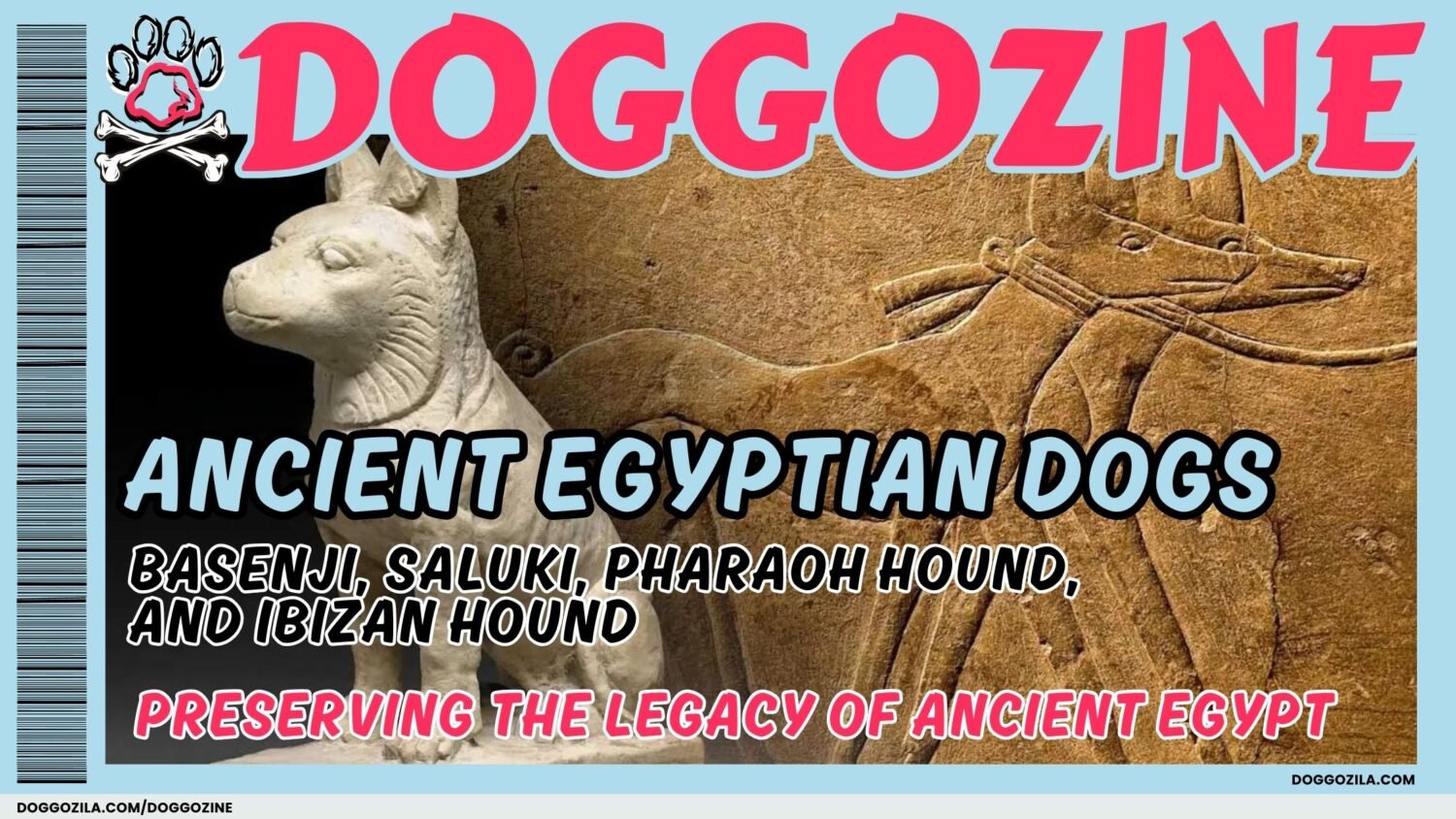Have you ever wondered, do dogs have belly buttons? It’s one of those quirky questions that pop into your head when you’re scratching your pup’s belly. The answer might surprise you—yes, they do! But unlike humans, a dog’s belly button isn’t as obvious.
Dogs are mammals, just like us, which means they develop in the womb and are connected to their mother via an umbilical cord. After birth, that cord is chewed off, leaving a small scar that fades over time. So, if you’ve been searching for your dog’s belly button, you might need to look a little closer!
In this scientific deep dive, we’ll explore everything about dog belly buttons—from how they form to why they’re so hard to find. We’ll also bust some myths, compare them to human belly buttons, and even look at some weird medical cases. So, grab your furry friend, get comfy, and let’s solve this mystery together!
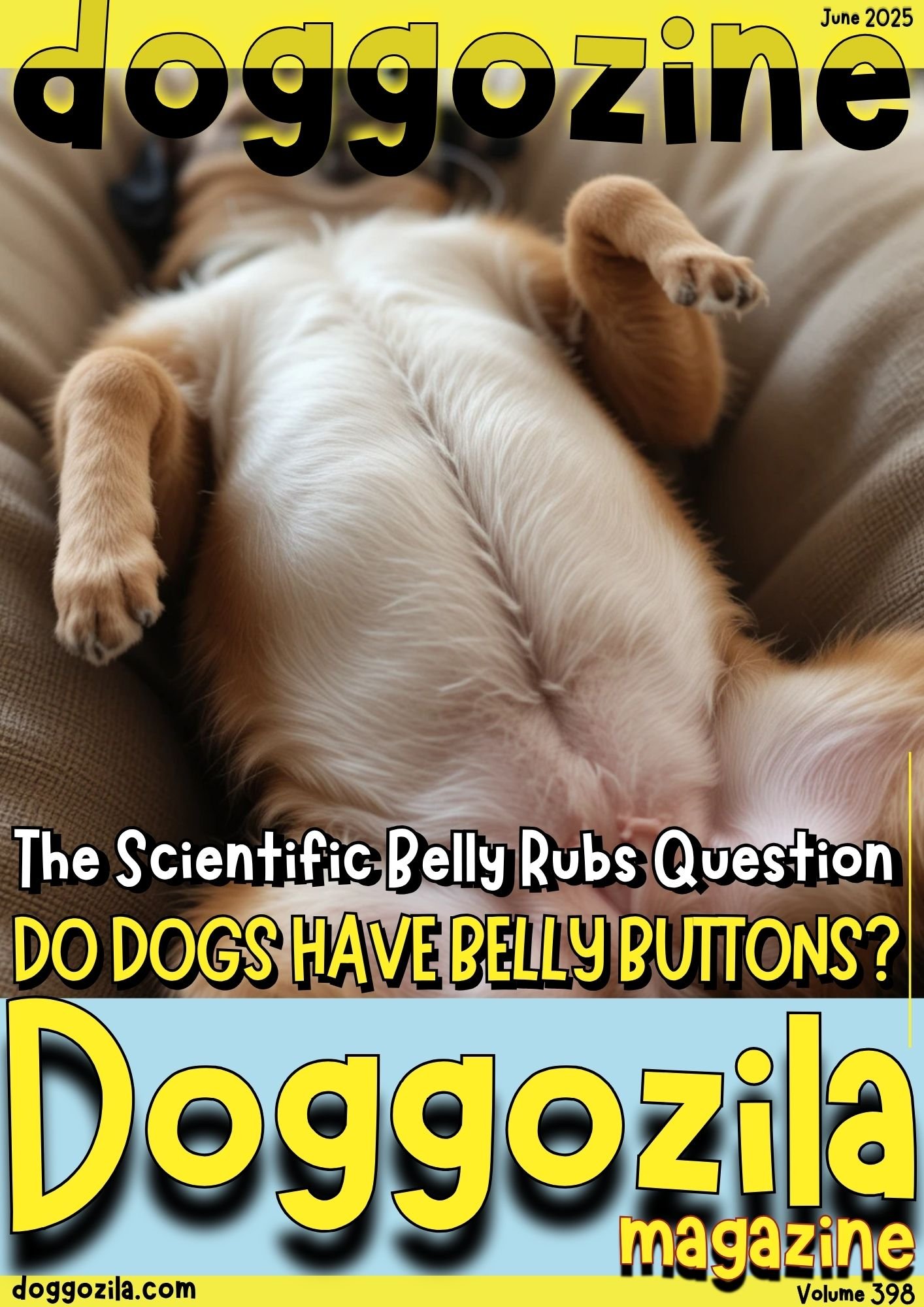
ANATOMICAL INSIGHTS: DO DOGS HAVE BELLY BUTTONS AS A REFLECTION OF THEIR MAMMALIAN HERITAGE?
Dogs have evolved as remarkable beings with a history as rich as it is mysterious. Their physical traits hold clues to an ancient lineage that spans millennia and continents. Researchers and pet enthusiasts worldwide consistently revisit these curiosities with renewed zeal. The interplay between biology and inheritance is both complex and delightful to unravel. In this section, we begin our journey by looking at the embryonic markers that tie our four-legged friends to nature’s grand design.
Dogs Do Have Belly Buttons: The Continuity of Life from Mother to Offspring
To understand the phenomenon, one must first explore the embryonic development shared among placental mammals. The formation of an umbilical cord during gestation leaves behind a remnant that many mistakenly consider trivial.
However, this remnant is a testament to the evolutionary thread that links all animals with a placenta. Dogs do have belly buttons, and this simple truth reflects the continuity of life from mother to offspring. Detailed veterinary research consistently shows that even the smallest feature holds profound biological significance.
Studies from various scientific journals reveal that this marker plays a role in understanding developmental genetics. Ultimately, this insight reminds us that every physical remnant has a story embedded within the fabric of life.
The Umbilical Legacy: A Deep Dive into Developmental Milestones
The birth of every dog begins with a robust connection formed through the umbilical cord that nourishes the growing fetus. Veterinary experts note that the cessation of this connection leaves behind a subtle mark on the dog’s abdomen. As these milestones are preserved in the canine form, they also serve as a bridge linking past evolutionary events with modern genetic outcomes.
Researchers have documented these transitions in numerous case studies, highlighting the universality of the process. There is a poetic symmetry in how nature records the beginning of life with such a simple detail. Through decades of observations, both scientists and pet owners have marveled at the consistency of this phenomenon. In every instance, the legacy of the umbilical connection illuminates both biological purpose and evolutionary beauty.
Comparative Reflections: Exploring Umbilical Traits Beyond Canine Borders
The intriguing presence of an umbilical remnant in dogs is mirrored in many other mammals, weaving a common tale of life’s beginning. Genetic analysis shows that regardless of species, there is a shared blueprint underlying this simple anatomical fact.
Field studies in diverse ecosystems have highlighted that such features may be subtle yet profound connectors across the mammalian family. Observations in wildlife research confirm that these small scars echo an enduring biological pattern.
Evolutionary biologists use these markers to understand how traits are conserved over thousands of years. The study of umbilical remnants has evolved into a nuanced dialogue between genetics and history. This comparative view enriches our understanding of biology while celebrating the curious commonalities across nature.
🔑 Key Points: The Umbilical Cord’s Role in Development – The umbilical cord is vital for fetal nourishment, and its remnant (the belly button) is a universal marker across mammals, reflecting shared evolutionary biology.
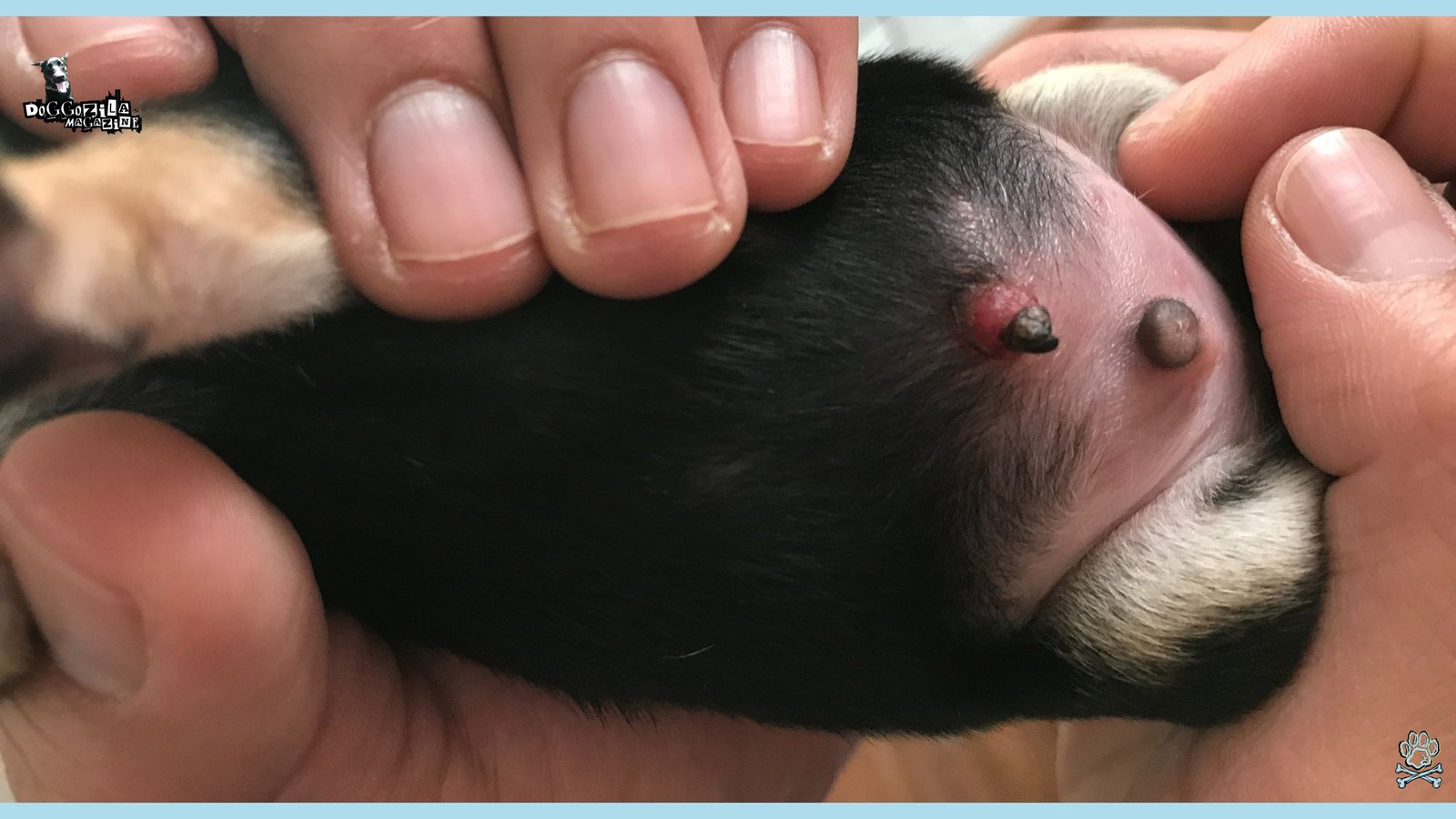
TRACING EVOLUTIONARY TRAILS: HOW DOG FEATURES DEVELOP THROUGH HISTORY AND NATURAL SELECTION
The journey of dog evolution is layered with mysteries waiting to be deciphered by both scientists and dog lovers alike. Over countless generations, natural selection has sculpted not only size and shape but also minute anatomical signatures. Each trait, from wagging tails to soft paw pads, reveals a deeper story of survival and adaptation. Historical and modern research come together to illuminate the paths these features have taken through time. In following these evolutionary trails, we also explore the subtle markers that connect dogs to their ancient past.
Evolutionary Curiosity: The Role of Natural Selection in dog Anatomy
Natural selection has played an indisputable part in shaping both grand and modest aspects of canine form. The aesthetic beauty of a dog’s body reflects a long evolutionary process fine-tuned for survival in varied environments. Each anatomical milestone has been tested by nature’s rigorous demands over the span of millennia.
The meticulous study of fossil records alongside modern genetic data forms a compelling narrative of adaptation. Every structural characteristic, however small, has been honed for optimal functionality. Field research has demonstrated that environmental pressures directly influence these delicate vestiges. Consequently, canine anatomical traits remain a dynamic record of historical evolution.
Understanding Traditions: Do dogs have belly buttons and why this remnant matters in development
Throughout history, legends and scientific inquiries have intertwined when exploring the birthmarks of our furry friends. Dogs do have belly buttons, and this query, though seemingly trivial, highlights the universality of mammalian development.
Traditional veterinary teachings emphasize that every mark has evolutionary significance passed down through generations. Historical anecdotes and modern scientific breakthroughs often converge, revealing broad insights into the continuity of life.
Case studies conducted over decades affirm that this small feature speaks volumes about shared genetic history. The cultural narrative around this remnant has inspired both academic debate and playful myth-making. In doing so, it enhances our appreciation for how ancient design choices sculpt modern anatomy.
Fascinating Studies: Examining the Genetic Blueprints Behind dog Development
Breakthrough research into dog genetics has unveiled the intricate pathways that determine developmental outcomes. In laboratories across the globe, scientists are mapping the blueprints that dictate everything from coat color to the formation of subtle anatomical marks.
Detailed studies have followed the progression of these traits through controlled experiments and long-term natural observations. The nuances of genetic inheritance reveal that even the smallest features are connected to a family of traits shared with many species.
With modern technology, researchers can now visualize developmental stages in unprecedented detail. Every experiment contributes to a growing mosaic of understanding that bridges past and present biology. This continuous study reinforces the notion that each genetic marker is part of an elaborate, interconnected design.
🔑 Key Points: Belly Buttons Are a Common Mammalian Trait – Comparative anatomy shows that umbilical remnants exist in many mammals, highlighting a consistent biological pattern tied to placental development.

EXPLORING CANINE ANCESTRY: DO DOGS HAVE BELLY BUTTONS AS A SYMBOL OF THEIR EMBRYONIC ORIGINS
The storied history of dog evolution is marked by a series of subtle yet profound characteristics. From ancient ancestors to the beloved pets of today, every anatomical feature carries a hint of history. The canine body reflects millions of years of evolutionary artistry and adaptability. In modern pet care, these traits evoke both scientific curiosity and emotional connection. This exploration delves into how a seemingly simple mark bridges the gap between biology’s past and present practices.
Decoding Developmental Signals: Do dogs have belly buttons and how they signal a deeper biological narrative
Investigating the embryonic timeline reveals that the formation of a belly button is not merely a trivial detail but a vital developmental signal. Dogs do have belly buttons, and this observable trait serves as a silent narrator of life’s early stages.
It is well documented that the umbilical cord, once a lifeline, leaves behind a permanent imprint once its role is fulfilled. Modern imaging technology has allowed veterinarians to study this process in real time. Each step of development is carefully orchestrated by genetic instructions passed down through eons.
Comparative studies highlight that these signals are consistent across numerous mammalian species. By decoding these subtle cues, researchers better appreciate the shared tapestry that unites all living creatures.
Insightful Analysis: Connecting Development to Lifelong Health Trends in Dogs
Comprehensive analyses have shown that early developmental markers often correlate with health outcomes later in life. Detailed research initiatives have traced various physiological traits from infancy to adulthood in dogs.
Health experts emphasize that the continuity of such features provides insight into both genetic predispositions and modern well-being. Observational studies conducted across different breeds reveal recurring patterns that form the basis of preventive veterinary care.
The integration of developmental biology with clinical practice yields strategies that can improve the quality of life for many pets. Empirical evidence supports the remarkable link between these embryonic remnants and long-term vitality. This synthesis of data invites a broader discussion on how minute characteristics inform overall canine health.
Comparative Anatomy: Unraveling the Mysteries of Umbilical Structures in the Animal Kingdom
From the tiniest rodent to the largest whale, a common thread runs through every species: the subtle mark left by the umbilical cord. Comparative anatomy reveals that similar structures, though varied in appearance, perform essential roles across the animal kingdom.
Meticulous studies demonstrate that these features are conserved by evolution, serving as natural records of each species’ beginnings. Detailed anatomical comparisons have shown that this trait is not random but rather a blueprint that transcends familial boundaries in nature.
Researchers use this information to draw fascinating conclusions about genetic lineage and evolutionary pressure. Such studies encourage us to view every animal through a lens of connected evolutionary heritage. Ultimately, this analysis deepens our respect for the delicate intricacies of life itself.
🔑 Key Points: Evolution Shaped Canine Anatomy – Natural selection has influenced even subtle features like belly buttons, with fossil and genetic evidence linking them to dogs’ adaptive history.

UNVEILING THE BIOLOGICAL BLUEPRINT: HOW DOGS DEVELOP UNIQUE TRAITS FROM CONCEPTION TO ADULTHOOD
Dogs emerge into the world as wonders of nature, bearing markers that speak to their origins and evolutionary journey. Their development is governed by precise genetic instructions and environmental interactions. With every heartbeat, the blueprint of their anatomy is meticulously crafted into the adult form. This natural progression offers scientists an insightful window into the interplay of inherited traits and adaptive evolution. In exploring these intricacies, we also uncover how developmental marvels shape the dog’s identity.
Scientific Underpinnings: The Role of Fetal Development in Shaping dog Bodies
Studies have found that embryonic development establishes the framework for all later physical traits in dogs. The cellular choreography during gestation sets a dynamic stage for future growth and differentiation.
Researchers emphasize that even the simplest of marks is a product of complex biological processes. The significance of this developmental stage is underscored in both classic texts and current research papers. Detailed embryological observations help pinpoint when and how these features materialize.
The careful orchestration of genetic signals ensures that each dog exhibits a unique blend of inherited characteristics. Through these scientific underpinnings, we gain a richer understanding of what shapes a dog from its earliest moments.
Technological Advances: How Modern Research Sheds Light on dog Genetic Markers
Innovation in imaging and genetic mapping has revolutionized our grasp of canine development. Researchers now have access to tools that reveal intricate patterns within the genetic code. Each marker, once considered insignificant, now offers clues to a dog’s prenatal journey. These advances have allowed for precise tracking of developmental milestones across various breeds.
Laboratory investigations combine data from both traditional observations and state-of-the-art technology. The convergence of these methodologies results in more comprehensive case studies with far-reaching clinical applications. Together, these technological strides are reshaping how we conceptualize the relationship between genetics and physical manifestation.
Critical Observations: Do dogs have belly buttons and the nuanced outcomes observed in various breeds
Veterinary practitioners have long noted that even the most subtle anatomical marks provide insights into the developmental histories of dogs. Dogs do have belly buttons, and this observation has sparked discussions on the evolutionary conservation of such features.
Detailed breed comparisons reveal that while the appearance may vary, the underlying biological process remains consistent. Clinical studies often incorporate these findings to enhance understanding of breed-specific health trends. Researchers document how even minuscule variations in these markers could signify broader developmental differences.
Cross-referenced case studies have illustrated the importance of these observations in both research and daily veterinary practice. These critical observations knit together a narrative that honors both historical context and modern scientific inquiry.
🔑 Key Points: Belly Buttons as Health Indicators – Veterinary studies suggest that early developmental markers, including umbilical scars, may correlate with long-term health trends in different breeds.
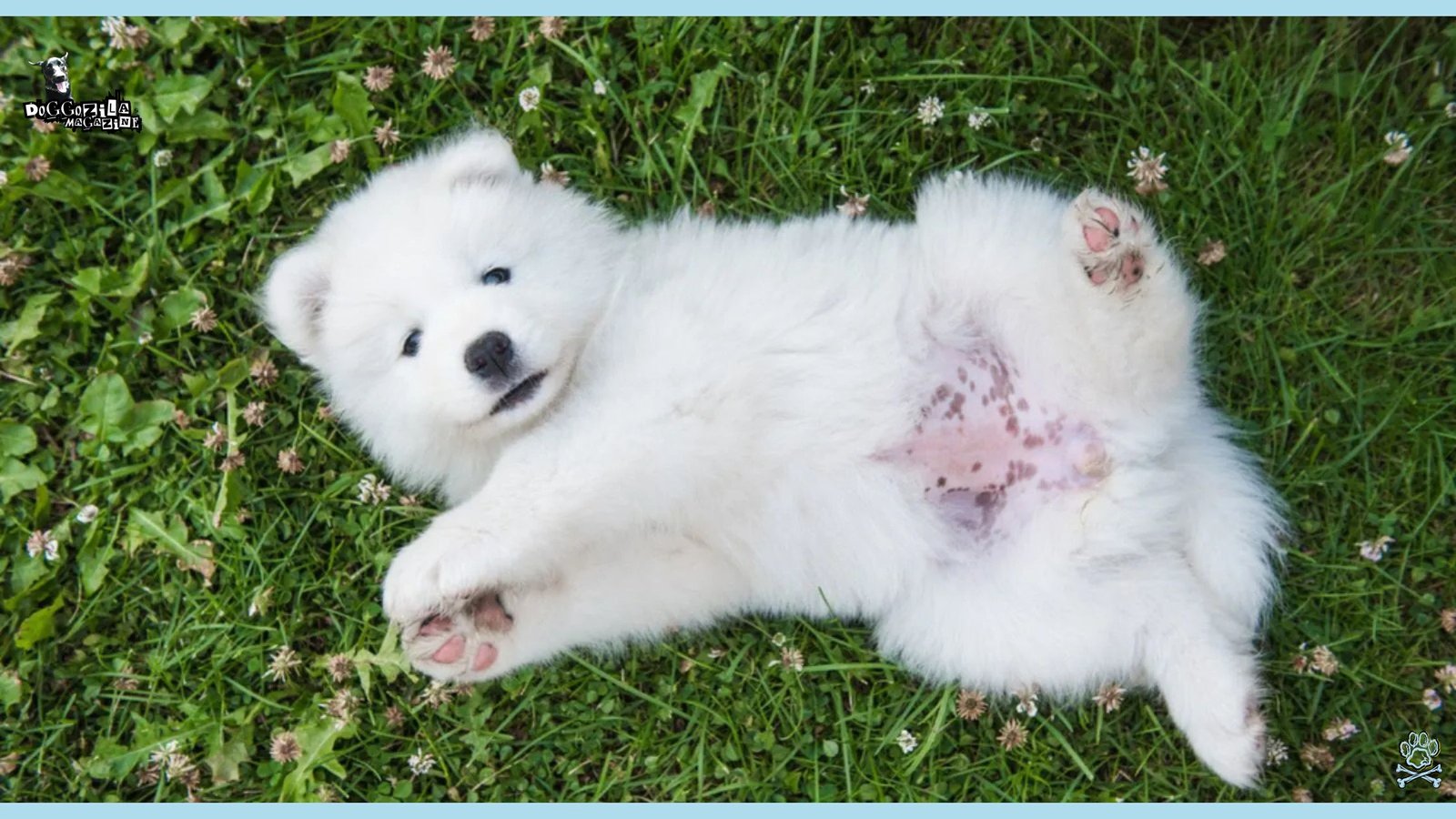
MYTH AND REALITY CONVERGE: THE BELLY BUTTONS THAT DOGS DO HAVE AS CONVERSATION BEYOND FOLKLORE INTO SCIENTIFIC DISCOVERY
The question of whether dogs bear belly buttons has danced between myth and reality for decades. Growing curiosity has prompted both scientists and pet owners to look deeper into this common yet misunderstood trait. Folklore once cloaked this feature in mysterious reverence, while modern science frames it as a natural anatomical occurrence. Through careful investigation, experts now dispel myths with objective evidence and creative analysis. This section merges the allure of ancient tales with pioneering research to reveal surprising truths about dog development.
Historical Perspectives: Do dogs have belly buttons as a continuing enigma in pet lore
Ancient writings and modern anecdotes have long cited small abdominal marks as symbols of life’s continuity. Do dogs have belly buttons, a question that once sparked imaginative tales among rural communities, now finds grounding in scientific documentation.
Historians have uncovered references in texts where these traits were often associated with mystical connections to the animal world. Researchers, examining old paintings and manuscripts, note that even early civilizations acknowledged these subtle markers.
As folklore intertwined with early veterinary practices, the belly button became a canvas for speculative narratives. Over time, empirical evidence has steadily replaced myth with clarity. Such historical perspectives enrich our modern understanding and celebrate the interplay of culture and science.
Modern Discoveries: How Genetic Research Clarifies Developmental Processes in Canines
Recent breakthroughs in genetic research have provided fresh insights into the developmental milestones of dogs. In laboratories around the world, scientists study detailed gene expression patterns from conception onward.
This research meticulously tracks how even small traits, such as umbilical remnants, are woven into a dog’s biological fabric. The integration of genetic analysis has challenged older assumptions that once veiled the phenomenon in mystery.
Advanced imaging and data analytics now offer clear evidence illuminating the precise roles these features play. The continuous refinement in research methodology ensures that our understanding keeps pace with technological progress. In this light, modern discoveries reveal the elegant precision behind each anatomical detail.
Integrative Reviews: Do dogs have belly buttons echoing through case studies and veterinary chronicles
A growing body of integrative reviews now collates findings from diverse studies, underscoring that dogs do have belly buttons as a consistent marker of mammalian development. Veterinary chronicles combined with case studies from multiple continents have unraveled layers of complexity surrounding this topic.
Researchers methodically analyze the anatomical record, linking it with embryological data that spans both benign and exceptional cases. Detailed reviews not only verify earlier hypotheses but also suggest fresh avenues for exploring developmental biology in canines.
This expansive research effort showcases the collaborative spirit of interdisciplinary inquiry. Through peer-reviewed journals and international conferences, experts consistently build upon one another’s observations. Such integrative reviews provide readers with a comprehensive view that fuses tradition, research, and clinical practice.
🔑 Key Points: Myths vs. Science – Folklore once shrouded belly buttons in mystery, but modern genetic research confirms their biological purpose, debunking myths about their significance.

MERGING VETERINARY SCIENCE WITH BEHAVIORAL STUDIES TO UNDERSTAND DOG ANATOMY
Modern investigation into canine anatomy now transcends singular approaches by integrating insights from various disciplines. Veterinary science joins forces with behavioral studies to create a holistic picture of dog development. The synthesis of research from multiple fields has led to more nuanced understandings of how subtle physical traits influence overall behavior. Such interdisciplinary efforts foster a creative dialogue that enriches both scientific theory and applied pet care. This section details how collaborative research unveils relationships between seemingly minute details and broader health and social patterns in dogs.
Observational Insights: Patterns Observed in Breeds and Their Embryological Remnants
Field experts have dedicated years to understanding how early developmental markers manifest across diverse canine breeds. Detailed observations reveal recurring patterns that speak to a common genetic legacy.
Longitudinal studies compare how these embryological remnants correlate with differences in temperament and health. The consistency across varied lineages highlights an enduring blueprint that shapes each dog. Researchers maintain that these patterns are less about mere chance and more about evolutionary fidelity.
Meticulous breed comparisons further affirm that even subtle traits are critical to unlocking a dog’s biological story. This wealth of observational insights continues to inspire deeper investigation into nature’s design.
Curiosity Satisfied: Do dogs have belly buttons and why this subtle detail intrigues both veterinarians and pet enthusiasts
A common refrain in veterinary circles is the gentle inquiry: Do dogs have belly buttons, and what hidden stories lie behind this modest mark? Detailed studies consistently show that this very detail is a silent witness to remarkable developmental processes.
Every scientific investigation into this topic reveals layers of genetic and environmental interplay. Enthusiasts and professionals alike find charm in how such a minor detail speaks volumes about a dog’s origins. With cutting-edge research methods, many of the old myths are now debunked through empirical evidence.
The convergence of curiosity and science creates a narrative that is as informative as it is endearing. In essence, this subtle detail represents both a historical legacy and an ongoing avenue for discovery.
Research Advances: Analyzing the Intersection of Anatomy and Behavior Through Case Studies
The latest research advances have begun to piece together the puzzle of how anatomical features influence behavior in our canine friends. Detailed case studies illustrate the multifaceted bond between physical formation and subsequent personality traits.
The accumulated data from veterinary clinics and behavior labs provides a statistically solid foundation for these insights. Researchers draw connections between early developmental markers and later social and physical behavior patterns.
These studies use quantitative analysis to unravel the delicate interplay between body structure and adaptive conduct. Each finding serves as a stepping stone towards a richer understanding of canine evolution. Such comprehensive research advances underscore the intricate beauty embedded within every living being.
🔑 Key Points: Breed Variations Exist – Some dogs, like Bulldogs or Basset Hounds, may have slight “outie” belly buttons due to looser skin, but these are harmless quirks.
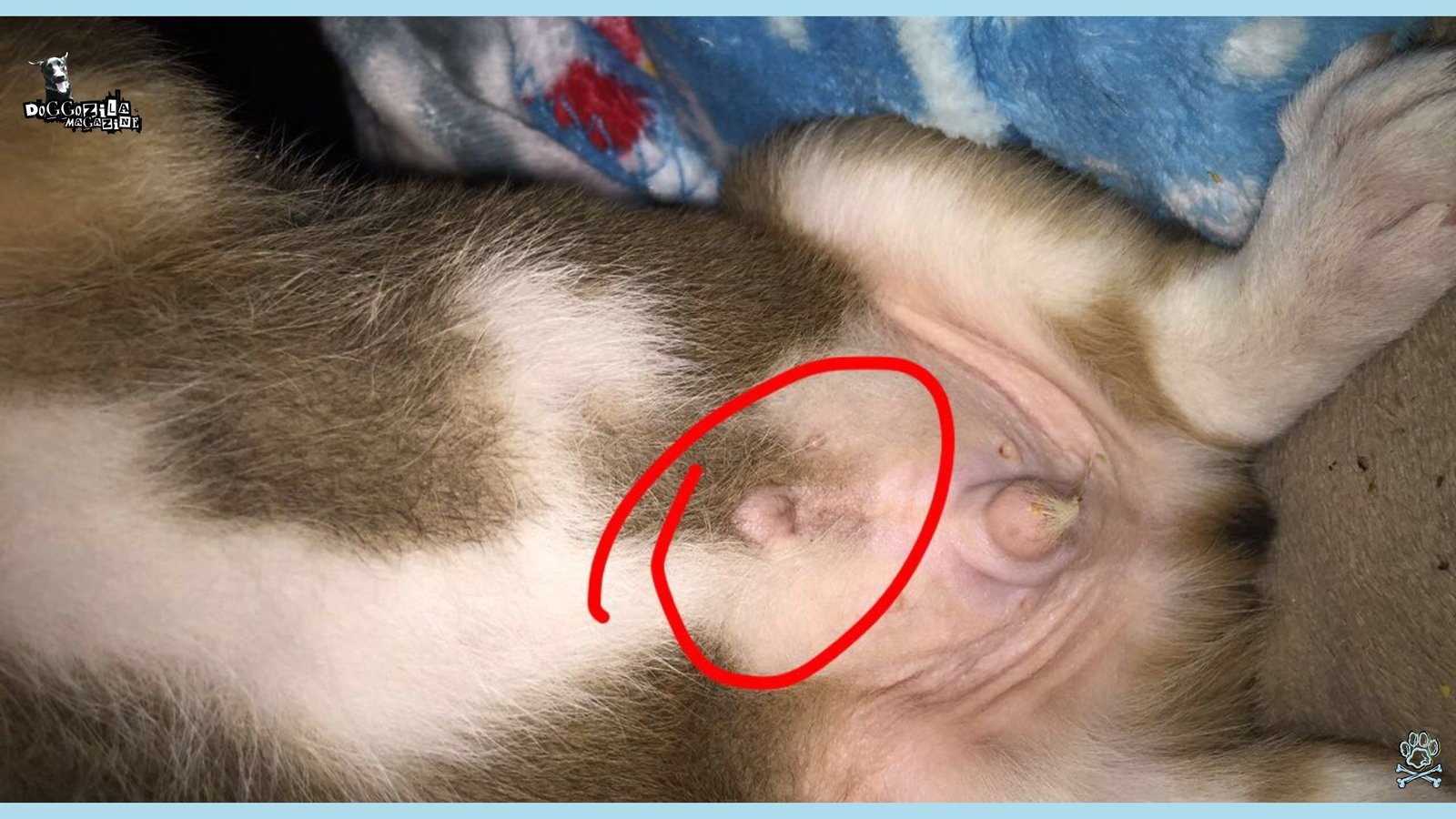
BRIDGING THE PAST WITH THE PRESENT: THE EVOLUTIONARY PURPOSE OF BELLY BUTTONS IN DOGS
The evolution of dogs from wild companions to cherished family members is a tale layered with tradition and modern innovation. Among the myriad features that have withstood the test of time is a small, often overlooked mark of origin. Blending ancient traits with contemporary care, dogs continue to fascinate us with their resilience. Their evolutionary journey is as much a part of their identity as the roles they play in human households today. In reflecting on this transformation, we explore how history meets modernity in unexpected ways.
Cultural Impact: Do dogs have belly buttons that serve as a metaphor for origins and shared universality
Cultural narratives across the globe have long celebrated the seemingly insignificant details of animal anatomy. Dogs do have belly buttons, and this feature is often imbued with deeper meaning in various traditions.
From folklore to modern storytelling, these marks have been interpreted as symbols of life’s interconnectedness. Anthropologists and veterinarians alike note that the prominence of such myths highlights humanity’s enduring curiosity about our animal companions.
Creative works and literature often use these symbols to evoke a sense of shared history between species. The persistence of these beliefs in cultural memory enriches our perspective of dog identity. Such cultural impact weaves together scientific inquiry and myth in a tapestry of shared wonder.
Behavioral Science: Do dogs have belly buttons and the surprising correlations discovered in developmental studies
Recent breakthroughs in behavioral science have unexpectedly linked subtle anatomical features with specific developmental outcomes. Dogs do have belly buttons, a query that now forms part of broader studies on behavioral traits, reveals fascinating genetic intersections.
Researchers have noted that variations in embryonic development can sometimes correlate with temperament and social behavior later in life. Detailed experiments and longitudinal observations lend statistical backing to these hypotheses. The interplay between anatomy and behavior continues to unfold in surprising ways, inviting further exploration.
Studies often feature multidisciplinary teams that incorporate genetics, psychology, and clinical practice to build their models. As a result, the conversation bridges biological details with the rich tapestry of animal behavior.
Evolutionary Narratives: Discovering the genetic threads connecting dog features across time and breeds
In uncovering the evolutionary narratives of dogs, scientists uncover layers of genetic threads that explain an array of physical traits. Detailed research illustrates how these genetic markers remain consistent even as breeds diverge widely over centuries.
Each anatomical trait not only signifies the past but also plays a role in defining future adaptation strategies. The continuity of features such as the umbilical mark serves as a testament to shared evolutionary origins.
Innovative genetic studies now draw parallels between historical data and current findings in surprising detail. By mapping these connections, modern science offers fresh insights into the long journey of canine development. The resulting narrative is both a tribute to nature’s consistency and an invitation to explore further.
🔑 Key Points: A Symbol of Canine Origins – The belly button is a small but meaningful reminder of dogs’ embryonic beginnings, connecting them to their evolutionary past and shared mammalian heritage.

EMBRACING DOG IDENTITY: DOGS DO HAVE BELLY BUTTONS AMID A SPECTRUM OF TRAITS THAT DEFINE THEM
The identity of our furry friends is etched in every physical detail and behavioral nuance they display. With roots deep in the evolutionary past, dogs carry with them markers that speak to their origins and the care they receive today. This multifaceted identity has been celebrated by pet owners, scientists, and cultural storytellers alike. Their development is a dynamic interplay of inherited traits and ongoing nurturing in modern households. Here, we explore how every detail serves as a brushstroke in the rich portrait of dog identity.
Veterinary Wisdom: Techniques and Insights that Reveal the Underlying Structure of Dog Physiology
Veterinary professionals have dedicated their careers to unraveling the complex physiology that underpins dog health. Advanced imaging techniques and genetic analysis have shed light on many of the subtle features once shrouded in mystery.
Observations on basic anatomical formations contribute significantly to informed diagnoses. As these techniques evolve, practitioners are better able to predict and manage health outcomes. Detailed case studies serve as educational cornerstone materials in veterinary schools around the world.
Through countless hours of clinical observation and research, a comprehensive picture of dog physiology has emerged. This wealth of veterinary wisdom continues to inspire innovative treatments and transformational care strategies.
Field Studies: Observing Dogs in Natural Environments to Understand Their Developmental History
Researchers on the ground have long dedicated themselves to studying dogs in their native habitats as well as in domestic settings. Naturalistic field studies offer unparalleled insight into how environmental factors shape physical development.
Detailed observations have documented the interplay between behavior, genetics, and subtle anatomical markers over the lifespan of these loyal companions. By immersing themselves in varied environments, scientists gain a better understanding of adaptive strategies that dogs employ. Each field study acts as a living laboratory where theory meets the vibrant realities of everyday life.
These studies not only validate laboratory research but also inspire innovative hypotheses about dog behavior and evolution. The thoroughness of observational research in the field significantly enriches our comprehension of natural developmental history.
Case Study Synthesis: Do dogs have belly buttons as an emblem of biological continuity derived from centuries of evolution
A collection of detailed case studies now converges to illustrate that dogs do have belly buttons, and this is more than a simple anatomical marker—it is a symbol of life’s enduring legacy. Researchers have systematically documented how this minor feature appears across a variety of breeds and environments.
Each case study contributes a unique piece of evidence, revealing intricate relationships between early development and later health. The synthesis of these studies forms a compelling narrative of continuity and evolution that spans not just decades, but centuries.
Veterinary records, genetic data, and historical research all point to the profound significance of even the smallest detail. Through this synthesis, the subtle mark transforms into a powerful emblem of biological perseverance. In celebrating these findings, we acknowledge the remarkable journey that has shaped every loyal, loving companion.
🔑 Key Points: Dogs Do Have Belly Buttons – As placental mammals, dogs develop an umbilical cord in the womb, leaving a small scar after birth that serves as their belly button, though it’s less visible than in humans.
Fun Fact: Some Dogs Have “Outie” Belly Buttons!
We’ve established that most dogs have flat, barely-there belly buttons—but did you know some can have slight “outies”? These aren’t like human outies but rather small, raised bumps where the umbilical scar healed with extra tissue. They’re completely harmless and just add to your dog’s unique charm!
These mini-outies are more common in certain breeds with looser abdominal skin, like Bulldogs or Basset Hounds. If you find one on your pup, consider it a quirky feature rather than a concern. Of course, if the bump changes size, becomes red, or seems painful, check with your vet—but otherwise, it’s just another fun fact in the do dogs have belly buttons saga!
Final Answer: Yes, Dogs do Have Belly Buttons—Now Go Find Your Pup’s!
After this deep scientific dive, the mystery is solved: do dogs have belly buttons? Absolutely! They might be tiny, hidden under fur, and easy to overlook, but every dog has one—a reminder of their time in the womb. Whether you’re a curious pet owner or just love weird animal facts, we hope this guide made the journey as fun for you as a good belly rub is for your dog!
So, what’s next? Grab your pup, conduct your own belly button investigation (treats may help cooperation!), and share your findings with fellow dog lovers.
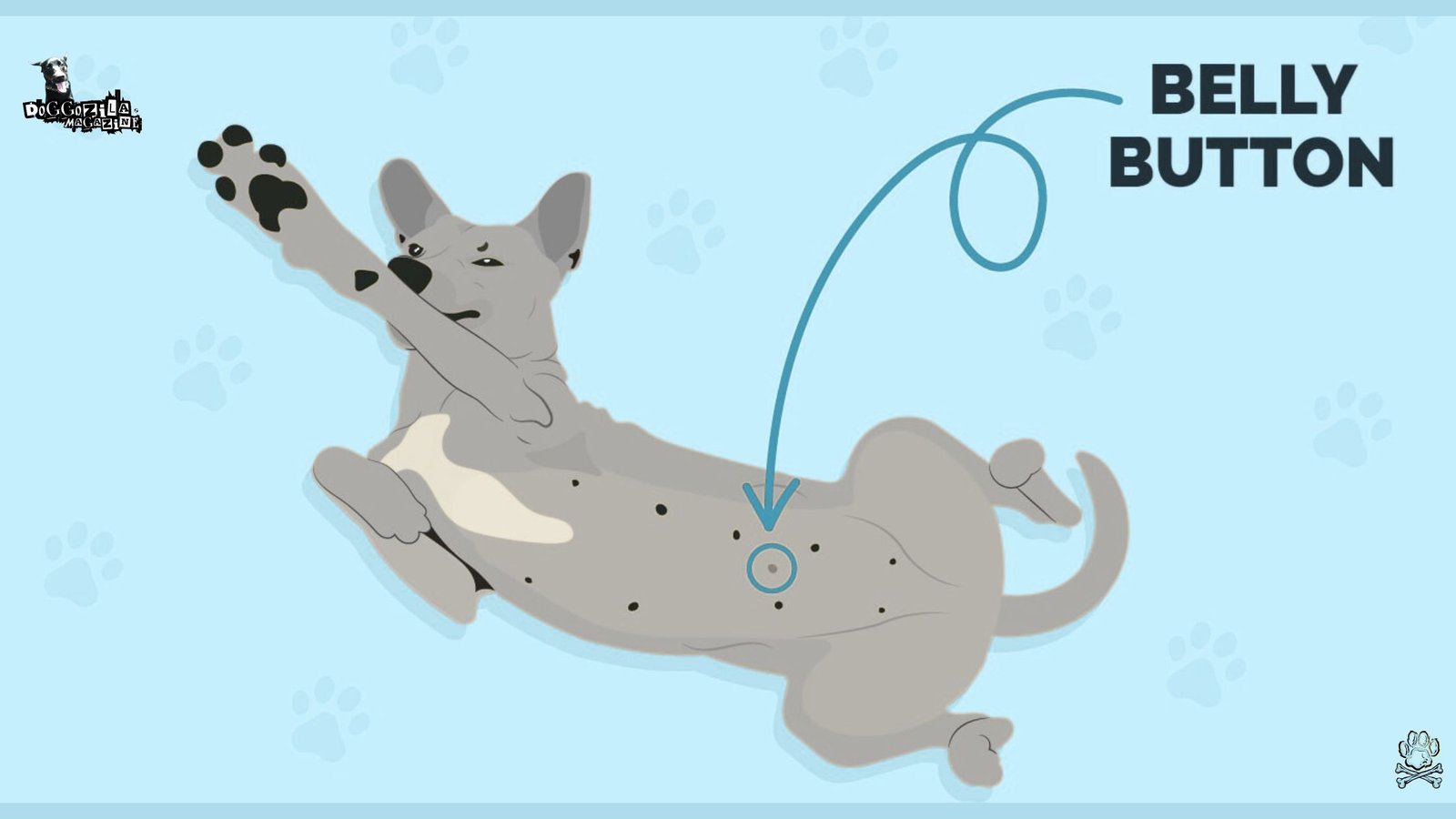
After all, who knew such a small scar could spark such big curiosity? Happy exploring!








